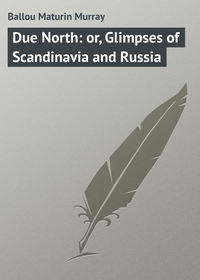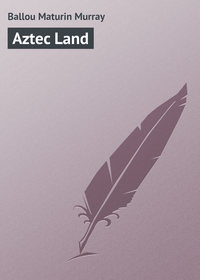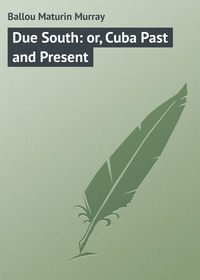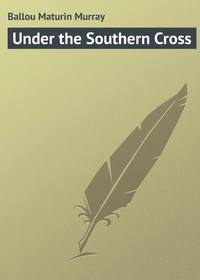 полная версия
полная версияDue West: or, Round the World in Ten Months
CHAPTER II
Landing in Japan. – Characteristic Street Scenes. – Native Bazars. – Women of Yokohama. – Excursion into the Country. – Visit to Kamakura. – Peculiar Scenes on the Road. – A Wonderful Bronze Statue. – Popular Religions of the Country. – The Hakone Pass. – A Youthful Mother. – Native Jugglers. – Temple of Shiba. – Review of the Soldiery. – Ludicrous Sights. – A Native Fair at Tokio. – A Poor Japanese Woman's Prayer.
Passengers arriving at Yokohama are obliged to land in small boats, as there are no wharfs; and vessels, on account of shallow water, anchor half a mile off shore. A small steam-tug came for us, and we found very comfortable quarters at the Windsor Hotel, kept by an American, – a large, well-organized establishment. The housemaids were little Japanese men dressed in black tights, but very quick, intelligent, and desirous to please. The servants all spoke English; indeed it is the commercial language of the world, and there are few ports open to commerce where it does not form the basis of all business transactions. French is the polite or court language of many countries, and with these two tongues at command, one can get along easily in nearly any populous region of the globe.
When Commodore Perry, in 1854, cast anchor with his little fleet of American men-of-war in the harbor of Yokohama, it was scarcely more than a fishing village, but the population to-day must exceed a hundred and thirty thousand. The space formerly covered by rice fields and vegetable gardens is now laid out in well-built, wide thoroughfares, smoothly macadamized and faultlessly clean and neat. The town extends along the shore, which is level, but is backed by a half-moon of low, well-wooded hills, among which are the private dwellings of the foreign residents, built after the European style, on the location known as the Bluff. The two principal hotels, the club-houses, and some consular business residences, are located on the water-front, a wide thoroughfare known as the Bund. A deep, broad canal surrounds the city, passing by the large warehouses and connecting with the bay at each end, is crossed in its course by half a dozen handsome bridges.
Ascending the bluff one gets a fine and extended view, embracing the city on one side and Jeddo Bay on the other, with a foreground composed of the harbor of Yokohama, where more or less shipping, representing foreign nations, is always to be seen. In the distant west, over seventy miles away, the white, cloud-like cone of Fujiyama can be clearly discerned, while close at hand are the charming, villa-like residences of the European settlers. Towards Mississippi Bay, as it is called, numerous native gardens are to be seen, with cultivated fields of millet, cotton, rice, and buckwheat. On getting nearer to them, one discovers sweet potatoes, egg-plants, and a queer vegetable called the daicum, of which great use is made by the people. It resembles an elongated turnip, is about as large round as one's wrist, and milk white. On the path leading round the base of the bluff were many pretty wild-flowers, among which the blooming trefoil and the harebell were seen intermingled with a large and handsome species of daisy. The starwort, a great favorite with the Japanese, was met in abundance. It will be remembered that this flower forms part of the Mikado's arms. It was November, but the winter sleep of the flowers is brief here, and there are said to be no days in the year when a pretty bouquet may not be gathered in the open air. Ferns burst forth in abundance about the bluff, and so great is the variety, that of this special plant, one is constantly tempted to form a collection. Here and there among the undergrowth were patches of soft, pea-green moss, of a velvety texture, that no cunning of the loom can equal.
There is a smart, business-like aspect to everything in Yokohama; the impression upon the stranger is that he is in a wide-awake community. The first business of a traveler upon arriving in a new country is not to look up its history, nor to study its geography or political economy. He should be at least grounded in these already; he follows his natural instincts, guided by curiosity, shrewdly watching the out-door life about him, the dress of the people, the architecture of the houses, modes of conveyance, mechanical operations, the fruits, flowers, and shop-windows, and especially the manners of the women, their status as it regards treatment, occupation, and the respect accorded to them. Nothing is so sure a keynote or test of civilization and progress as this. We do not look to see women receive, even in Europe, much less in the East, such chivalric deference and respect as are shown to them in America, but the nearer any people imitate us in this respect, the more advanced will they be found in the other refined amenities of social life.
In this commercial capital of Japan everything struck us as curious, every fresh step afforded increased novelty, every new sight was a revelation, while all about us were tangible representations of the impossible pictures of the cheap fans, the lacquered ware of commerce, and the school books. The partial nudity of men, women, and children, the extremely simple architecture of the dwelling-houses, the vegetation, the extraordinary salutations between the common people who met each other upon the streets, the trading booths or bazars, and the queer, toy-like articles which filled them, children flying kites in the shape of hideous yellow monsters, each subject became a fresh study. Men propelling vehicles like horses between the shafts, and trotting off at a six-mile pony gait while drawing after them one or two persons with ease, was at first a singular aspect to a stranger. So were the naked coolies, by fours, bearing heavy loads of merchandise swung from their shoulders upon stout bamboo poles, while they shouted a measured chant by which to keep step. No beggars were seen on the public streets, the people without exception seeming neat and clean in their remarkably scanty covering.
The houses were special examples of neatness and of toy-like size, being seldom more than twenty feet square. All persons, foreigners or natives, took off their shoes before entering upon their delicately-lacquered or polished floors. This we not only did out of respect to the universal custom of the country, but because one did not feel like treading upon those floors with nailed heels or soiled leather soles. The conviction was forced upon us that such universal neatness and cleanliness must extend even to the moral character of the people. A spirit of gentleness, industry, and thrift was observable everywhere, imparting an Arcadian atmosphere. We saw at first no domestic animals except a tailless cat, with an attempt at that appendage, which was a decided and ignominious failure. These creatures were frequently tied to the house door like a dog, but for what purpose who can say? A cat confined after that fashion elsewhere would strangle itself directly. Later on we saw specimens of the curious lap-dogs of the country, so diminutive as to be quite remarkable, and which were highly prized, though one could see no beauty or attraction in their snub noses and big, bulging eyes. Great care is taken in the breeding of these oddities, which at their perfection are thoroughly useless. Some dwarfing process is employed, as they do not exceed ten inches in length when full grown.
Cows' milk is unknown among the natives, though the universal drink is tea without sugar, and by no means strong. The general food is rice and vegetables seasoned with dried fish, but no meats. Some domestic fowls were seen, not in abundance, and the eggs are used for domestic purposes. Doubtless the fowls are also eaten, but the average Japanese is satisfied with rice and vegetables, adding the inevitable cup of tea three or four times a day. Women carry their children lashed to their backs like American Indians, and thus encumbered perform field labor or domestic work, without seeming in the least to realize their double task. The elder children carry the younger ones in the same manner, going about their play with a load on their backs that would stagger a Yankee child. This we found to be a universal custom both in town and country, while the great multiplicity of young children was a constant subject of surprise. The married women shave off their eyebrows and blacken their teeth as evidences of wifehood, the effect being hideous, which indeed is the wife's professed object; and, like the ancient Grecian ladies, they count their age from the time of marriage, not from the time of birth. The ideas of strangers as to the proprieties are sometimes severely outraged; but habit and custom make law, and men and women bathe promiscuously in the public baths, – notwithstanding which there is a spirit of delicacy and good breeding among them, in itself a species of Christianity. Windows are glazed with rice paper in place of glass, and the light is really but little impeded, though one cannot see through the paper, all of which circumstances fix themselves on the memory.
The pictures and authorities relative to Japanese life which one has accepted as authentic have not quite prepared the traveler for the facts and experiences which crowd upon him, when among this very interesting race. The actual embodiment of the people, their manners and customs, together with the local surroundings, are all so different from the preconceived ideal, that everything comes with the force of a surprise. Figure, physiognomy, costume, nudity, – one is not quite prepared for anything; all is like a fresh revelation. Once brought face to face with Japanese life, our fabric of anticipation tumbles to pieces like a house of cards. Everything is unique. There is no criterion for comparison. Nothing but personal observation quite reconciles one with the manners and customs of a race, powerfully individualized by the isolation of centuries. The generally accepted idea that the Japanese resemble the Chinese in their lives and habits is entirely erroneous, the marked differences between them extend into all the relations of life. Especially is this the case as to courtesy and civility, qualities which cost nothing, but which buy everything.
A visit to the curiosity bazars, or curio-shops, as they are called, is one of the first excursions of the newly-arrived tourist. The Japanese have quickly discovered to what European and American tastes run, and they can manufacture antiquities as rapidly as purchasers can be found. In the line of antique bronzes they especially excel; and as to old china, from four to five centuries of age, it is now turned out by the wheelbarrow load daily at Yokohama, from half-a-dozen establishments. Of course there are some genuine pieces, though rare, and the prices charged for such are almost prohibitory. Well made, substantial lacquered ware takes the place of nearly all other for domestic utensils. China and glass are far too brittle and perishable for common use among the people. When strangers appear, the china is produced, and the universal tea served in it.
There are two streets in Yokohama known as Honcho-dori and Benten-dori, where the stranger will find an extensive collection of bricabrac, as well as other fine goods. It is amusing to examine the old spears, swords, daggers, bronzes, and astoundingly ugly carved idols. There are stores also devoted to lacquer, china, porcelain, and satsuma ware, not ancient, but choice, elegant and new patterns, far more desirable to our taste than the cracked and awkward specimens held at prices equal to their weight in gold. The former speak for themselves, the latter can be and are constantly imitated. The reason that so many swords and daggers are for sale, and at prices for which it would be impossible to manufacture them, is because the army has discarded the native weapons and adopted European arms. So the junk-dealers and curio-shops have the former supply of the army. The Japanese sword is remarkably well tempered, and will cut through a copper penny without turning its keen edge, this being the usual test of its quality. In these streets there are also some fine silk and lace stores, with many choice articles of ladies' wear, embracing very fine specimens of native silk industry. The Japanese trader has got the trick of asking twice as much as he is willing finally to take for his goods, but there are also some of these establishments where the one price system is honestly observed. As a rule, however, all through the cities, the price at first asked for an article need not be taken by the purchaser as any real criterion of its value. Strangers would do well to engage the services of a resident whom they can trust, when they go upon a shopping expedition; otherwise the result of their bargains will probably be anything but satisfactory, when the goods are received at home and prices considered. All buying and selling in the East seems to be a sort of warfare, where each party endeavors to take advantage of the other. In China it is much more so than in Japan. Main Street, as the name indicates, is the principal thoroughfare, quite Europeanized, mostly improved for stores and offices, and containing at the northwest end the town hall, telegraph and post offices.
A ride in a jinrikisha, a small man-propelled chaise, afforded us other agreeable surprises. The loveliness of the hills and valleys, so delicate and diminutive compared with our late Yosemite experience, seemed more like fairy land than reality, making one crave the pencil of an artist to depict them. In little plots adjoining the small, frail native houses, various cultivated flowers were observed, among which chrysanthemums and occasionally roses were to be seen; also a species of fuchsia, bearing a bell-like blue and scarlet flower. The foliage of the trees, and especially of the feathery bamboo groves, was very beautiful, while the specimens of the various pines, yews, and arbor vitæ were many of them odd and new to us. The leaves and minor branches of the pines seemed to emulate the alphabetical characters of the Japanese language, growing up, down, and inward, after their own eccentric will. The tea fields, mostly located upon side hills with favorable exposures, were in full bloom, looking as though there had been a fall of snow, and the flakes still rested on the delicate tips and branches. Far away and all around were yellow rice fields, heavy with the milk-white grain, the broad acres undulating gracefully beneath the pressure of the passing breezes. The abundant wild flowers were vivid in color and fantastic in shape, nearly all unknown to us, save now and then an azalea, an iris, or some single-leaved representative of the rose family.
In the houses which we entered – all are open; there are no fastenings upon dwelling-houses in Japan – we found neither chairs nor tables, the people all sitting, eating, and sleeping upon the floors, which were as neat and clean as a newly-laid table-cloth. The humility and deference of all classes was quite disconcerting, for when we entered or departed from a house, the host, hostess, and children bowed their heads until their foreheads touched the floor. Japanese women, both in features and general appearance, are far from prepossessing, but we were told there were marked exceptions among the people of rank. The exclusiveness and debased condition of the sex produces a shyness and diffidence very prejudicial to their appreciation by strangers. The eyes of the women, though elongated, are not nearly so much so as those of the Chinese, the features being more open in expression, and devoid of a certain cunning almost always observable in the face of a Chinese woman.
Japanese women give the greatest attention to dressing their ebon-black hair. None are so poor or humble as to forget this inexpensive ornamentation. Nature has endowed them with a profusion of covering for the head, and they wear no other. It is not very fine, to be sure, but always black as ink, long and heavy, and when arranged in their peculiar style, with broad-spread puffs, like old-fashioned bow-knots, it forms a very striking exhibition of head-gear, shining with oil and sparkling with flashy hair-pins. When once disposed to the wearer's satisfaction, the hair is not disturbed for several days, and is almost the only evidence of personal vanity which they exhibit, as they wear no other ornaments in the form of jewelry. The pillow of which they make use at night, when sleeping, is calculated to preserve the well-greased and plastered tresses in good order, being nothing more nor less than a curved piece of wood upon which the neck rests rather than the head and frightfully suggestive of an execution block.
Here and there, upon the roadside, shrines and holy niches were often observed, approached generally by a flight of stone steps, on a hill-side, looking very old and moss-grown. Upon these were placed consecrated idols, or religious emblems of peculiar character, calculated in our uninitiated eyes to provoke mirth rather than reverence. The principal object was usually a sitting figure in stone, wood, or metal, gilded, and more remarkable for contortion of features, multiplicity of arms, and obesity of body, than for any other characteristic, visible or symbolical. Fertility of soil was manifest everywhere, each square foot of earth bearing its tribute of rice, millet, or vegetables, the rice crop predominating. The fertilizing process is strictly observed and appreciated here, being the enrichment of the soil almost universally applied in liquid form.
A trip to Kamakura, fifteen or eighteen miles from Yokohama, and near where is located the wonderful statue of Dai-Butsu, was one affording much satisfaction. We traveled by jinrikishas, the men drawing us thither, one passenger in each vehicle, in three hours and a half, and back again towards night in the same length of time. The road is mostly located along the sea-coast, or rather in sight of it, so that in many places the ocean comes in to give additional interest and beauty to the scenery of green valleys, well-wooded hills, and richly tilled land, Fujiyama, the one volcanic mountain of Japan, nearly always in sight. Rarely is such rich and varied vegetation to be seen, combined with beautiful outlines of hill-side and mountain top, here covered with an infinite variety of firs. The ancient town of Kamakura was once the political capital of the country, but is now composed of only a few straggling tea-houses or small inns, and half a dozen native dwellings. Here is the famous and deeply interesting Shinto temple of Hachiman, one of the deified heroes of Japan. Some of the trees which cluster about it are a thousand years old; while within the structure are historical emblems, rich, rare, and equally old, composed of warlike implements, sovereign's gifts, ecclesiastical relics, bronzes of priceless value, and the like. Time consecrates; and what is gray with age becomes religious, says Schiller. The temple is built upon a lofty plateau, reached by climbing many broad stone steps, slippery, moss-grown, and of centuries in age. Here was pointed out a fine, lofty specimen of the umbrella tree, of the pine family, with broad leaves of a deep green. The general form was conical, with branches and leaves so dense as to hide the stem.
Less than two miles from this temple is situated the great Buddha image, composed of gold, silver, and copper, forming a bronze figure of great size, nearly sixty feet in height, within which a hundred persons may stand together, the interior being fitted as a small chapel. A vast number of little scraps of paper, bearing Japanese characters, fluttered from the interior walls of the image, plastered there by pious pilgrims as prayers to the presiding deity. As the door was opened for us to enter and was closed again, these scraps rustled in the agitated atmosphere like an army of white bats, producing a puzzling effect until our eyes became accustomed to the dim light, and the cause was apparent.
This famous and sacred figure is certainly as remarkable as the Sphinx, which so gloomily presides over the sandy desert lying at the feet of the great Pyramids. As a work of art, perhaps its only merit consists in the calm dignity of expression and repose of features which are so colossal. It is many centuries old, – certainly six hundred years; and how such an enormous amount of bronze metal was ever cast, or how set up in such perfect shape when finished, no one can say. We are told that it was formerly covered by a temple, long since mouldered to dust; but it is certainly none the less effective and impressive, as it now sits surrounded by the natural scenery and the thick woods. Were not the groves God's first temples? Guide-books have not yet invaded the far East, or we should be told how many square inches of bronze is contained in the Dai-Butsu figure, and how many ounces it weighs; statistics concerning which we felt a most sublime indifference, while we gazed upon its combined and wonderful effect.
The glorious old temple of Hachiman, already spoken of, is a sort of Japanese Mecca for pilgrims from all parts of the country; though when we were there, wandering among its lofty and sacred groves, wending our way over its well-worn stone steps and causeways, by its lotus-ponds and heavy-eaved shrines, there were no other visitors. A strangely solemn silence impressed us, until our very voices seemed to be echoed back with a mysterious significance. The shaded and pleasant paths are kept in perfect order, swept clear of every falling leaf or broken twig, showing that care and a sense of responsibility is not wanting. Although these temples are built of wood, so carefully have they been kept, they appear as fresh and bright to-day as though a single decade only had passed since they were finished, instead of a thousand years. A large body of priests reside upon the spot, and are in constant attendance, supported by the offerings of the semi-annual pilgrims who come from the south in large bodies, as well as by the contributions of devout visitors from neighboring cities.
It is well to mention in this connection that the prevailing religions of Japan are Shinto and Buddhism, each, however, being sub-divided into many sects. The Shinto may be said to be indigenous to the country, and is also the official religion, being largely a form of hero worship; successful warriors are canonized as martyrs are in the Roman Catholic church. The Buddhist faith is borrowed from the Chinese, and was introduced about the sixth century. There may be any diversity of creeds among a people, extending even to idolatry. Creeds never came from heaven, but morality is the same in Christian or heathen lands, because it is of God. It is singular that two nations located so near to each other, both of Asiatic race, and with so many important features in common, should have for two thousand years maintained a policy of entire isolation towards each other, though they are now good friends as well as neighbors. This is more remarkable when we remember that a thousand years before the Japanese borrowed from China their written characters, religion, and philosophy. As to the language of Japan, it is composed, as popularly written, of the Chinese and Japanese combined, – the fifty Chinese characters being so intimately interwoven with the original Japanese as to form a medley of the two. Modern authors freely use both in the same sentences, and indeed the characters of both languages often appear in the same line.
It is rather deductions than detail which we propose to record in these pages, and though many excursions were made, a minute description of them would prove tedious. Places were pointed out to us here and there, where large and populous cities once stood in eligible spots, but where no ruins marked the place. A dead and buried city in Europe, or even in India, leaves rude but almost indestructible remains to mark where great communities once built temples and monuments, and lived and thrived, like those examples of mutability, Memphis, Pæstum, Cumæ, or Delhi, but not so in Japan. At first it seemed strange that a locality where half a million of people had made their homes within the period of a century should now present the aspect only of fertile fields of grain. But when it is remembered of what ephemeral material the natives build their dwellings, namely, of light, thin wood and paper, utter disappearance ceases to be a surprise. It is a curious fact that this people, contemporary with Greece and Rome at their zenith, who have only reared cities of wood and temples of lacquer, have outlived the classic nations whose half-ruined monuments are our choicest models. The Hellenic and Latin races have passed away, but Japan still remains without a dynastic change and with an inviolate country.









